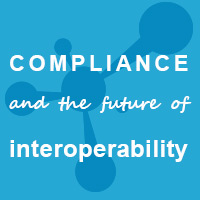Posted By Lorana Price On January 8, 2020
What is HL7?

As interoperability becomes a more pressing issue for providers, EHR vendors are paying attention to the standards that work to enable seamless health data exchange. Terms used frequently are HL7 and HL7 FHIR (which is pronounced “fire”), but many providers don’t really know what these things mean.
To start, what is HL7? Health Level Seven International (HL7) is an accredited standards organization. They focus on providing a framework and standards for the exchange, integration, sharing and retrieval of electronic health information. As an organization, their mission is to provide standards that empower global health interoperability. Their goal is to improve care delivery, optimize workflow and enhance knowledge transfer among healthcare providers, government agencies and patients, to name a few.
HL7, FHIR and your EHR
HL7 Compliance
If your Electronic Health Record (EHR) solution is HL7 compliant, it means it conforms to the requirements of the standard. There are specific requirements an EHR software must meet. For example, the HL7 EHR Behavioral Health Functional Profile includes the functions and conformance criteria that is important for behavioral healthcare providers’ clinical records system. For providers, HL7 compliance tells them their EHR will work toward:
- Improving the health of at-risk populations by improving care coordination between specialty behavioral health, primary care, and related human services providers, through systems interoperability
- Improving provider performance accountability
- Supporting emerging Accountable Care Organizations (ACOs)
HL7 FHIR

HL7 Fast Healthcare Interoperability Resources (FHIR) is the next generation standard that provides a framework for interoperability. It’s designed to facilitate the exchange of electronic healthcare information (EHI) between organizations. It was created to make it easier to connect different healthcare data elements using a web-based approach. Using this framework, data elements will each have a tag that acts as a unique identifier, just like the URL for an individual web page.
By using the internet as a platform, users can access the same URL regardless of the type of device they’re using — Apple or Windows, smartphone or desktop. FHIR is aiming to do this for health information. Their goal is to enable developers to create applications that allow access to data no matter which EHR solution is being utilized.
Get Excited about FHIR
FHIR is exciting for both patients and providers because it will make healthcare information easier to utilize. Not only will it make the experience much more like other online experiences people are used to, but it will also make wearable devices more clinically relevant.
With FHIR, all kinds of health and wellness products — think fitbit, iHealth and an array of wearable medical devices — could theoretically tie into a patient’s EHR. Going one step further, this patient-generated health data could be parsed by another app that is built on FHIR and performs an analysis of the data. This analytical data would enable providers to access relevant patient-generated health information and use it in a way that could support the overall wellbeing of the patient.
From the patient perspective, FHIR aims to provide a single personal health record. So, rather than logging into portals for various providers, patients will be able to access a comprehensive record that shows all of their medications, diagnoses, health concerns, and more. Basically, a one-stop-shop for their personal health information.
What the Future Holds with HL7
With standards like this in place, it is easy to see the direction healthcare is going in. One that provides easy access to health information for both patients and providers. One that aggregates data to be a useful tool for supporting, and even predicting, health outcomes. One that brings healthcare to a point of truly delivering whole person care.
https://healthitanalytics.com/news/4-basics-to-know-about-the-role-of-fhir-in-interoperability
https://healthitanalytics.com/news/as-fhir-matures-healthcare-interoperability-comes-into-focus
https://www.hl7.org/implement/standards/product_brief.cfm?product_id=307
Like this blog? Share it!



